It was a blast meeting the Agile community in Estonia. What a vibe!
More to come on that subject .)
Anyway, here are my slides: "Mind over matter"
Cheers
Continue readingIt was a blast meeting the Agile community in Estonia. What a vibe!
More to come on that subject .)
Anyway, here are my slides: "Mind over matter"
Cheers
Continue readingThis other day, I stumbled upon an article by John Seddon – "Rethinking Lean Service" which had been laying around in my disk space for a while.
|
"Training workers against demand and ensuring they are responsible for what they do is preventative (the better alternative to inspection). All arbitrary measures (standard times, cost, targets and standards) are removed from the system and instead real measures are used to help managers and workers alike understand and improve the work. It is better, for example, to know the actual time it takes to complete transactions as ‘one-stop’; this improves resource planning. Similarly it is better to know the true experience of the customer for any work that goes through a flow (endto-end time or on-time-as-required) in order to improve the flow and, consequently, reduce costs. There are many examples of these principles in use, published examples include Pyke (2008), McQuade (2008), ODPM (2005), and Jackson, Johnstone and Seddon (2007), Seddon and Brand (2008).
|
It struck me how these principles can be deployed using a Kanban system:
Maybe Kanban is well suited for services?
Continue readingMe and Henrik’s book have now been translated to french.
Through the admirable effort of Claude Aubry, Frédéric Faure, Antoine Vernois and Fabrice Aimetti, you can read it here:
http://henrik-kniberg.developpez.com/mattias-skarin/livre/scrum-kanban/
How do you go about converting a development team from Scrum to Kanban? Can we benefit from incremental improvements in projects under high pressure?
Here is a case study of a team who transformed from Scrum to Kanban and managed to save a derailing project. I hope it can inspire others to experiment and improve.
Some of the things I learned:
(… and I have a far way to go until I can order a proper cup of tea and a croissant 🙂
Anyway, here’s the link:
Converting a Scrum team to Kanban
Is this years final series in the Swedish hockey league, there is one team that standing out from the crowd. They are more stable, persistent and thorough in every part of their game than the other teams.
Today I stumbled over this comment from one of the players. It highlights a mindset I have seen in both software and sports team that basically felt unstoppable.
"If I am going to think about this victory on the way home? No. I am only going to think about the details that is going to make us better in the next game"
– Jimmie Ölvestad
As a part of this weeks Kanban Applied course, the teams had to solve problems using Lego robots.
It was good fun. So fun teams almost forgot about Kanban 🙂
Programming the bot:
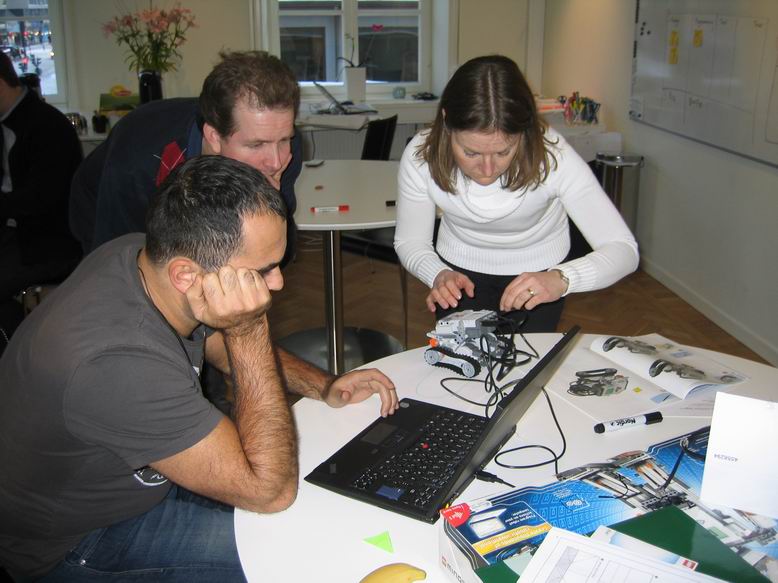
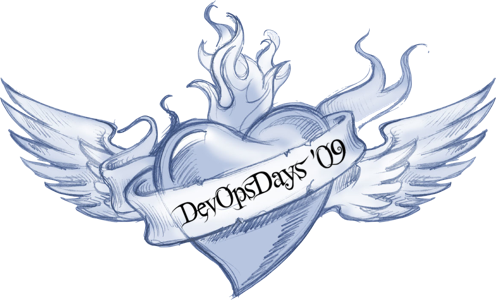 |
A video of my presentation at Devopsdays’09 in Belgium is now available.
I didn’t wear a microphone so you might need to pop up the the volume 🙂 If you are more interested in the slides check them out here |
 |
Doing a road map can be a tricky thing. There are plenty of constraints and dependencies to consider:
|
I find that pair programming is by far the fastest way of traversing the decision tree. Basically, if you are a Product Owner, construct the road map together with another person. Lay out the plan that best meets the constraints and business goals and let the other question the options. (Of course, don’t forget to switch).
Altogether, it helps you check the different options and prepare arguments. You will be better prepared when meeting the stakeholders. For when you do, there is always something uncertain waiting for you.
Continue reading| My and Henrik’s book on is out. Get a downloadable version, or buy the full copy at InfoQ.
The book includes:
Hope you enjoy the reading! |
 |
For further reading about the case study, see my presentation at Devopsday’s 2009.
Continue readingEver had this thrown at you?
"This production bug is unacceptable, it must never happen again!"
And that event, outside your systems control, formed a policy that affected all your every day life. Failure to distinguish between uncertainty under our control and uncertainty imposed by outside events is a bad management habit.
Instead;
"Manage the normal – treat exception as exceptional"
And have a happier life 🙂
Continue readingFeeling busy? Not ready when the deadline approaches? Many things in action?
Maybe you should consider a personal kanban. Now, I will admit the first to admit I heard about the concept I thought "but isn’t slight over administration? What about just saying no?" But not all events are under our own control and as this story will tell; I’m now convinced it actually works.
The personal kanban can help address three problems:
Why do we level out? In many agile teams I have met the introduction of Agile methods have made the teams to take a big leap. But then, after a while, they level out. Why so?
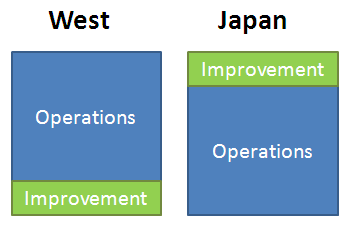
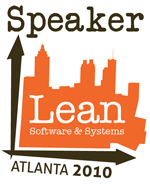 I will present at the Lean Software & Systems Conference, April 21-13 in Atlanta.
I will present at the Lean Software & Systems Conference, April 21-13 in Atlanta.
Looks like a promising event, with speakers like Don Reinertsen and David Anderson.
Ps: There are some new exciting events in Stockholm this spring coming up with David Anderson, stay tuned.
Continue readingDoing kanban, there will come a point where you will be faced with holding or breaking the work in progress limit. Here are fours ways of dealing with that situation:
Don’t forget, the "urgent" story brings information you can learn from. Is it a common or special cause? Is it an undiscovered demand type? Does the stakeholders upstream understand your approach?
Continue readingSo, you’re planning the future. There are is a lot of stuff you are eager to do. But stop and think – are you pushing forward in the right direction?
Make sure there’s a balance between:
 |
My slides from Devopsdays’09 in Belgium.
It is inspiring to see the number of system administrators looking into Kanban. Myself I discovered Cucumber scripting. Thanks to Patrick who pioneers a great conference for system administrators and developers. |
Doing kanban, there will come a point where you will be faced with holding or breaking the work in progress limit. Here are fours ways of dealing with that situation:
Don’t forget, the "urgent" story brings information you can learn from. Is it a common or special cause? Is it an undiscovered demand type? Does the stakeholders upstream understand your approach?
Continue readingSo, you’re planning the future. There are is a lot of stuff you are eager to do. But stop and think – are you pushing forward in the right direction?
Make sure there’s a balance between:
 |
My slides from Devopsdays’09 in Belgium.
It is inspiring to see the number of system administrators looking into Kanban. Myself I discovered Cucumber scripting. Thanks to Patrick who pioneers a great conference for system administrators and developers. |
Last weeks have been busy!


Talks I have held,
Talks – upcoming
Continuous improvement ( "kaizen") is a core process within Kanban and/or Scrum.
But what does it mean?
Here is an A3 I use to explain the concept
Continue readingAt the Lean Software conference in London Portia Tung tipped me off about Christopher Avery’s responsibility model. I need to show it to you.
Now test yourself – just how professional are you?
Continue readingI have been watching several discussions over the years between brilliant people where clear perception of the problem prevented them from solving it. It is so easy to marry ourselves with our suggestions of action (how) that we loose focus about what the nature of the problem really was.
For cases like this, I advice teams to follow this problem solving algorithm:
For seeing situations like this, I try to keep the following "aha" reminders in the back of my head..
As an arguing manager, if I can’t concertize the problem it is a sign I need step back and put the right decisions into the right hands – the people closest to the problem.
As an arguing engineer, have I progressed towards engineering a solution, or even evolved into solving another problem (which I felt needed to be sorted first), before concretizing it’s nature with my counter part?
Continue readingTake a look at this chart and tell us how we are doing?
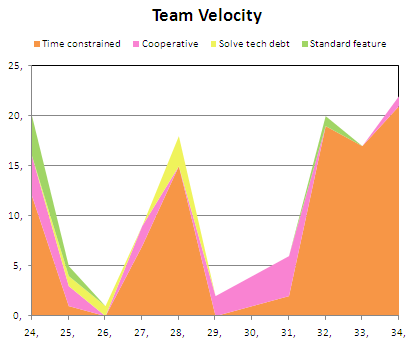
This problem gets accentuated as we try to plan releases. If we went on and made a made a release plan based on this velocity, what predictability can we expect?
 Sometimes it is hard to stop a running meeting. You might have someone so fond of talking he doesn’t realize time is up. Or the daily stand up has gone haywire. How do you break in, politely?
Sometimes it is hard to stop a running meeting. You might have someone so fond of talking he doesn’t realize time is up. Or the daily stand up has gone haywire. How do you break in, politely?
Teach everyone the timeout sign.
"hey, let me get back to code" 🙂
Continue readingYour team is coding along, sprints are passing by, your somewhere around sprint 15.. life is ok.. ..or?
As a famous test leader once said:
"Team are happily completing sprints but nothing gets’s done"
Here are a couple of things to look out for in your Scrum organization..
Continue readingIt is not uncommon I run into a team coding a system in desperate need of refactoring, at the same with huge pressured to move things out of the door. When 
So we need to be a bit more clever. He are two ways;
Continue readingOn September 24-25:th in Stockholm, there is a chance to learn Kanban directly from the source!
Kanban is framework to help improve efficiency and continuous learning, but with a very light weight footprint. It works both in- and outside software environments. Support is one example.
| You will learn how to | Who can benefit from participating? |
|
|
Hosting the training is David Anderson, one of the most experienced practitioner in the field. So it is a great opportunity to learn from the source.
http://www.crisp.se/kanbanjedi
Continue readingFor those of you who wonder "why would anybody convert a Scrum team to Kanban" (see earlier blog) – it is important that you understand the true intent. (..yes there is one! 🙂 What expected output do you have from a process framework?
This important "why" question is often left out in the debate. The heated "Scrum vs Kanban" discussion is a good example. Try yourself "why are you using Scrum"? (or Kanban). At what point would you throw the tool out for not delivering?
It is no wonder debates turns heated if we disagree on where we are heading. But if we instead start with clarifying intent ("why") – then the actual choice of tools becomes less important (more like a boring context summary 🙂
Why then? How do you know that the process tool works for you?
If you are getting results from continuous improvement – your tool is right. If it is not happening, it is probably wrong. (check yourself, what improvements have you benefited from lately?)
This was the main reason I chose to implement Kanban in the Scrum teams. It was not because the sprints where not delivering, it was because the improvements didn’t happen.
Continue readingHere is a real world story about Steve Jobs:
|
"I wish you could have seen Steve in action with Lee Clow of Chiat/Day, working on Apple’s ‘Think Different’ campaign. Lee, the living legend whose creations ranged from the ‘1984’ Apple commercial to ‘Yo Quiero Taco Bell,’ showed an early version of ‘Here’s to the crazy ones’ from the ‘Think Different’ campaign. A full minute of black-and-white pictures of Picasso, Einstein, Muhammad Ali, Rosa Parks, Bucky Fuller, amazing music and Richard Dreyfus reading this poem, seeing it for the first time brought the hair up on the back of my neck. So here I am, practically with tears rolling down my face, and Steve just looks at Lee, shakes his head, and says, ‘You’ve lost it.’ I thought, ‘What?! That’s one of the greatest ads I’ve ever seen!’ And here’s Steve going, ‘No. The music isn’t right. It was right before. And you’ve changed the pace of the pictures, and you’ve got them in the wrong order.’ He sends them packing, back to LA. They came back after probably 30 hours with no bodily functions, and I was stunned. It was a lot better. Steve has a vision of what great is, and he’s never going to settle for anybody else’s standard of great. |
(Excerpt from an interview with Ed Niehaus at Coopers Journal, full story here)
Two views: